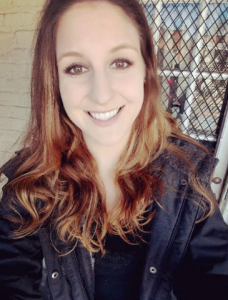My Life with Ehlers Danlos Syndrome
by Maggie Ridgely
My life was supposed to be different. It was not supposed to be full of hospitalizations, surgeries, 30+ medications, dozens of doctors, and endless compromises – concerning school, career, relationships, and the simplest of daily activities. This is not what I pictured for myself.
I grew up a very active kid, and that benefited me greatly. I was extremely athletic, and when it became apparent that I was excelling the most in basketball, I gave up my other hobbies: other sports, the instruments I once played, singing, and all other activities I enjoyed. I was practicing with the varsity high school team while I was in elementary school. I was being watched by colleges when I was in middle school. I played on multiple teams year-round, and when I was not playing, I was training. Not only did I love the sport, but it became my entire identity – my entire life.
I started getting hurt – a lot. I was breaking bones, tearing muscles, and soon the surgeries and hospitalizations began. After years of this, I was finally diagnosed with a connective tissue disorder called Ehlers-Danlos Syndrome. With my diagnosis came the discovery that I would never be able to play sports again, let alone run or jump or partake in anything physical. Things got only worse, and nothing was ever the same.

Ehlers-Danlos Syndrome (“EDS”) is a connective tissue disorder that affects collagen, which is the most abundant protein in your body. It’s in your skin, joints, ligaments, and organs, and it acts as the glue that holds your body together. In those with EDS, this collagen is faulty and does not work properly. I deal with chronic pain, daily joint dislocations, GI issues, autonomic issues, chronic fatigue, insomnia, vomiting, fainting, headaches, vision issues, and much more. While the physical aspect of my chronic illness is daunting, there is another world of symptoms and consequences beyond the physical – a world of sadness and disappointment.
You see, I look fine on the outside. I look like a healthy young person, which simply isn’t the case. This confuses people. People have a hard time understanding invisible illnesses. If you look fine, you must be fine, right? Wrong. This mentality is so very damaging to those who are struggling with invisible illnesses because it breeds a mentality of self-blame. If no one else believes I’m sick, then is it maybe just in my head? No, it isn’t – but it is so painfully easy to blame myself for the problems created by my illness. Please be kind to each other. Please listen to your friends and loved ones. Believe your peers. Just be kind.
I had to completely change my worldview. I had to reevaluate my career, my future, and even simple household tasks. I have to think three steps ahead, all the time. I also had to change my idea of what a productive member of society looked like. I had to learn that my worth was not based on my physicality. I had to find things I valued in myself that didn’t have to do with what my body was able to do. This has been an ongoing struggle, but a beautiful and meaningful struggle, as well. I’ve had to rediscover myself and really deconstruct my idea of what being a strong, successful human looked like. I am thankful for that process, even if it is heartbreaking and frustrating. EDS has taken so much of my happiness, but it has changed who I am, and changed me for the better.
May is EDS Awareness Month. There is no cure. People are dying from this illness. Without awareness, there are no funds. Without funds, there is no research. Without research, there is no cure or meaningful treatment. Please take a few minutes to learn about EDS and spread some information around. There are people in your life who struggle with invisible illnesses, and as someone who has multiple, I can tell you that those people would be ecstatic to know someone is in their corner and trying to understand how to be a better friend. Illness, and particularly invisible illness, is isolating – so be the bridge that helps prove we are not alone.
About the author:
With her background in psychology, Maggie spends much of her time supporting and counseling other chronically ill people, runs a mental health support group, volunteers for several causes, and is very active in advocating for social justice when her health allows. She also enjoys being outside with her dog Tank, her cat Diesel, and a good book.
Learn more about EDS: https://www.ehlers-danlos.com/.
Related Reading
March is Endometriosis Awareness Month by Jennifer Pemberton
Overcoming Obstacles: Chronic Illness and Learning What Being a Warrior Means to Me by Christy Batta

1 thought on “My Life with Ehlers Danlos Syndrome by Maggie Ridgely ”